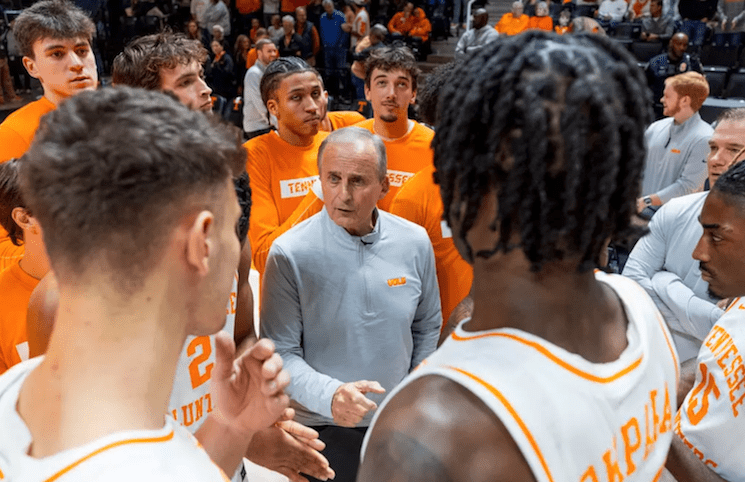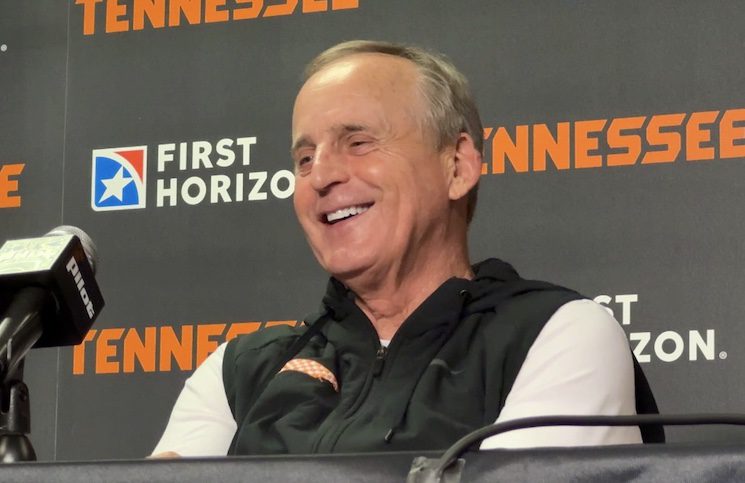Running Backs

Seniors: Madre London
Juniors: None
Sophomores: Ty Chandler, Tim Jordan, Trey Coleman
Freshmen: Princeton Fant, Jeremy Banks
Tennessee’s running backs figure to be more important for the Vols’ offense this upcoming season than they have been in quite some time. Not that UT’s running backs haven’t been important the last half decade; but this year will see Tennessee’s offense operate through what the running game can accomplish.
New offensive coordinator Tyson Helton is likely bringing more power formations and pro-style concepts to Tennessee’s offense, and that means the Vols’ running backs are going to be counted on to play a huge role this season. And this unit is full of promising, yet very inexperienced players.
If not for the addition of Michigan State grad transfer Madre London, Tennessee wouldn’t have a scholarship running back on the roster over the age of 20 at the start of fall camp (Trey Coleman turns 21 in mid-September). And if not for London, the Vols would only be returning one career start among their other five scholarship backs.
London fits the mold of what Tennessee’s coaches want in a running back, but injuries in his past give reason for concern. He started out strong at Michigan State but suffered an injury as a redshirt sophomore that kept him out of action for most of the season. He came back in 2017 and made a few starts, but he wasn’t the same back he was in 2015 and was eventually overtaken by younger backs on the roster.
Now London — who is a bigger, bruising back — appears to be healthy and has a change of scenery. He’s not expected to be Tennessee’s starting running back, but he should be a great mentor to UT’s younger backs and should be able to provide some power and good run blocking with his 6-foot-1, 213-pound frame.
Ty Chandler, a former four-star in-state prospect, figures to start for the Vols at running back. He certainly has the skill to be a full-time starter at running back as he showed at times last season, and he’s bulked up to 201 pounds on his 5-foot-11 frame. Chandler is a dynamic play-maker who didn’t get a chance to shine very often as a true freshman last year, but when he got his opportunities, he left quite the impression.
In his only start last season, Chandler amassed over 150 yards of offense and two touchdowns against Kentucky. He also returned a kickoff for a touchdown against Indiana State and totaled over 60 yards of offense on just nine touches against Florida.
As long as Tennessee’s offensive line can play competently, Chandler has a chance to have a very good year in 2018. He has “future star” written all over him.
But the Vols won’t just be using Chandler and London at running back this year. Tennessee figures to use four and maybe five running backs throughout the season. So what else do the Vols have at this position?
Tim Jordan looked like a great fit for Tennessee’s new offense in the spring, and he had a solid Orange & White Game performance to cap things off. At 5-foot-11, 203 pounds, Jordan certainly has the bulk to fit in this offense, and he’ll be interesting to monitor this fall. In the spring, he was one of the biggest running backs on UT’s roster until they switched Princeton Fant over to the position. That won’t be the case this fall, however.
Trey Coleman actually has more size than Jordan, but Jordan has more muscle and overall skill from what we’ve seen so far. Coleman is 6-foot, 210 pounds, but he hasn’t done much as a Vol so far. He was behind Chandler and Jordan in the spring, and he was unimpressive in the Orange & White Game. Coleman may be the fourth back on the depth chart to start, and depending on how quickly Fant can adjust to the position, he could end up being the fifth or sixth.
Speaking of Fant, he’s easily the biggest player at Tennessee’s running back position at 6-foot-2, 222 pounds. But he still has a lot to learn as a converted wide receiver/tight end. He may see the field this year some, but unless he takes some big steps forward in fall camp, he’ll be buried on the depth chart.
The most interesting player to watch in UT’s running back group will be Jeremy Banks. Coming in as a true freshman, Banks already has the perfect build to be a workhorse in Tennessee’s new offense. The 6-foot-1, 211-pound back has already impressed in the summer, and he figures to be even more impressive once the team gets pads on and starts doing more actual football work.
Can Banks come in and find immediate playing time as the Vols’ third back? Can he leapfrog both Coleman and Jordan for a spot on Tennessee’s depth chart? He’ll need to learn to pass and run block effectively, but once he gets those down, look out. Banks has a lot of potential, especially in this offense.
Chandler isn’t necessarily guaranteed the starting spot for the Vols’ running backs, but it’s very likely he does win the job. The rest of the rotation is what will be interesting to watch this fall. If London is healthy and has his edge back, he should claim the second spot. But Jordan looked determined in the spring, and Banks has plenty of upside.
Regardless of who places where in the depth chart, the Vols will be using multiple backs this season and will give plenty of touches to a number of players.
Tennessee’s running back unit is full of hope and potential, but they’re going to need a good offensive line to help them achieve their goals. Staying healthy will be a key as well, but the Vols have plenty of solid options at running back this season to work with.



